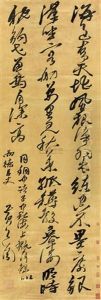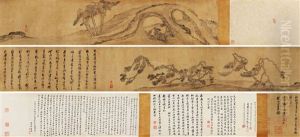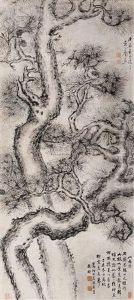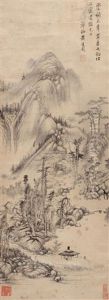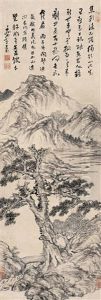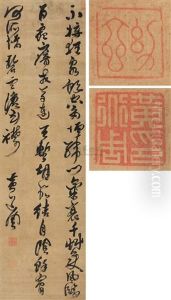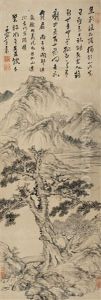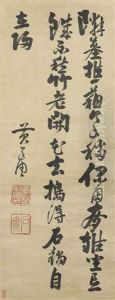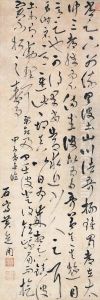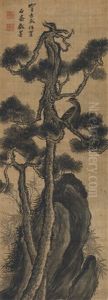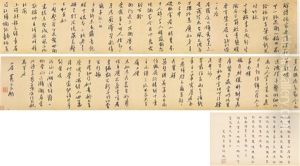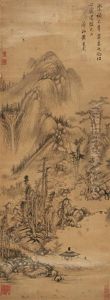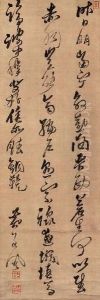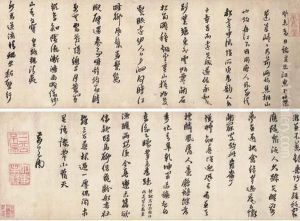Huang Daozhou Paintings
Huang Daozhou was a prominent Chinese scholar, calligrapher, poet, and politician during the late Ming and early Qing dynasties. Born in 1585 in Fujian province, Huang grew up during a time of significant social and political upheaval in China. He was deeply influenced by the teachings of Confucianism, which shaped his philosophical outlook and guided his career in the imperial civil service. Huang was not only known for his intellectual pursuits but also for his staunch loyalty to the Ming dynasty, a trait that would eventually lead to his downfall.
Huang Daozhou's career spanned various roles within the Ming government, where he was recognized for his integrity and dedication to the state's welfare. However, his outspoken criticism of corrupt officials and advocacy for reform made him many enemies within the court. This, coupled with the turbulent political climate of the time, led to his eventual dismissal from official positions. Despite these setbacks, Huang continued to be an influential figure in the literary and intellectual circles, contributing significantly to the development of Neo-Confucianism and the art of calligraphy in China.
As the Ming dynasty began to falter under the weight of internal corruption and external pressures from the Manchu-led Qing forces, Huang Daozhou's loyalty to the Ming cause became increasingly pronounced. He was involved in several uprisings against the Qing, leveraging his scholarly and political network to support the Ming resistance. Unfortunately, this commitment to the Ming dynasty's restoration led to his capture and execution by Qing forces in 1646. Huang Daozhou's death marked the end of a life dedicated to the service of his country and the principles of Confucianism. Despite his tragic end, Huang's legacy lived on through his writings and calligraphy, which continue to be celebrated for their beauty and philosophical depth.
